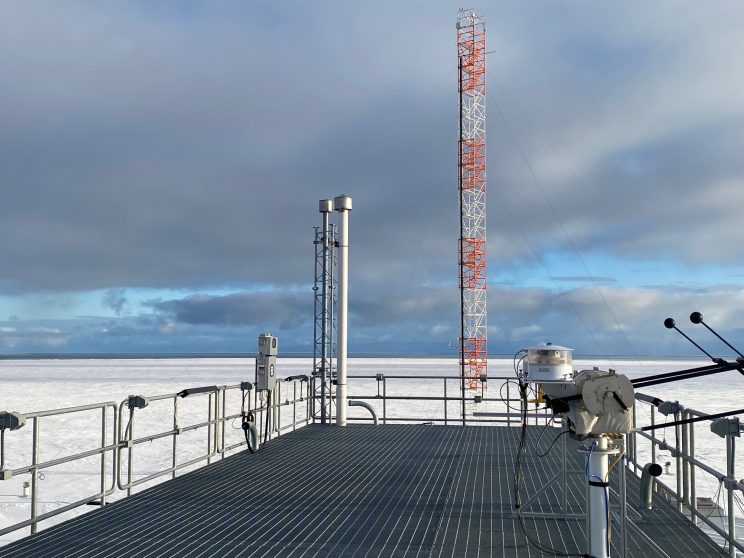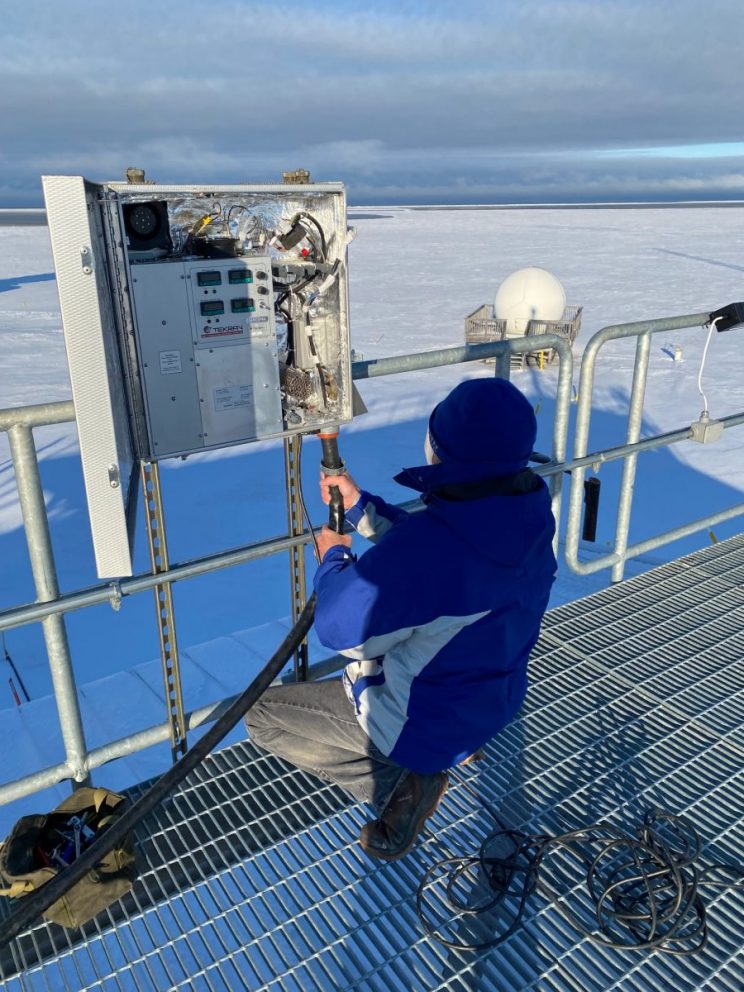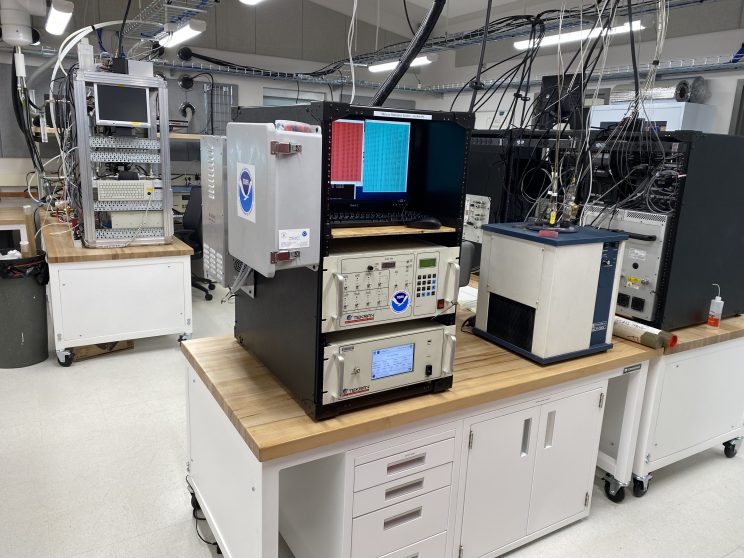Atmospheric Mercury Monitoring Installation Completed at Barrow Observatory
October 18, 2021
Short daylight hours greeted Paul Kelley and Winston Luke of NOAA’s Air Resources Laboratory as they traveled to Utqiaġvik (formerly Barrow) in Alaska. Their visit to install a Tekran® mercury speciation system at NOAA’s Barrow Atmospheric Baseline Observatory was overdue, having been previously postponed by COVID travel restrictions. NOAA’s baseline observatories are administered by the Earth System Research Laboratories’ (ESRL) Global Monitoring Laboratory in Boulder, CO and are located in remote regions of the globe to measure the chemical composition of the background atmosphere.
The Tekran® speciation system measures on a continuous basis atmospheric concentrations of gaseous elemental mercury, gaseous oxidized mercury, and mercury bound to particles smaller than 2.5 µm in diameter. These long-term measurements in the Arctic will continue indefinitely, and the data are collected under the framework of the National Atmospheric Deposition Program’s (NADP) Atmospheric Mercury Network (AMNet), a collection of sites across the United States dedicated to the measurement of atmospheric mercury species. NADP is a cooperative monitoring program comprised of many groups associated with federal, state, tribal and local governmental agencies, educational institutions, private companies, and non-governmental agencies. Monitoring methodologies and operational protocols are harmonized across various NADP networks to ensure consistency in the measured data, and the data sets are publicly available.
Mercury is a potent neurotoxin that can lead to cognitive impairment in the developing brains of fetuses, infants, and children. Human exposure to mercury primarily comes through the consumption of contaminated seafood, and indigenous peoples in the region rely heavily on fishing for the bulk of their diet. Scientists monitor the mercury levels in the Arctic not only for key indicators of climate change, but also of the evolution of mercury dynamics in local and regional ecosystems.
For more information:




